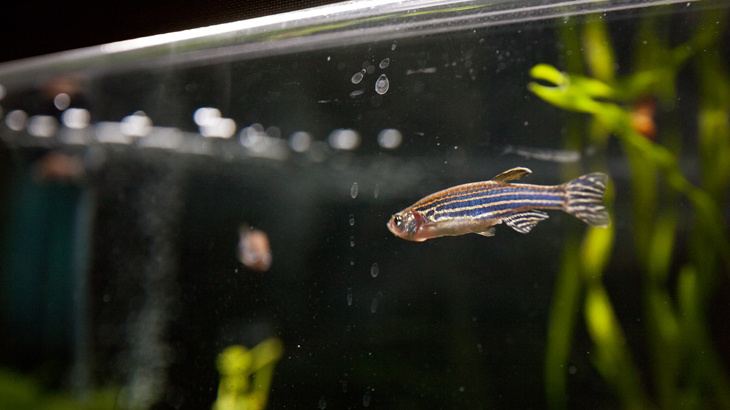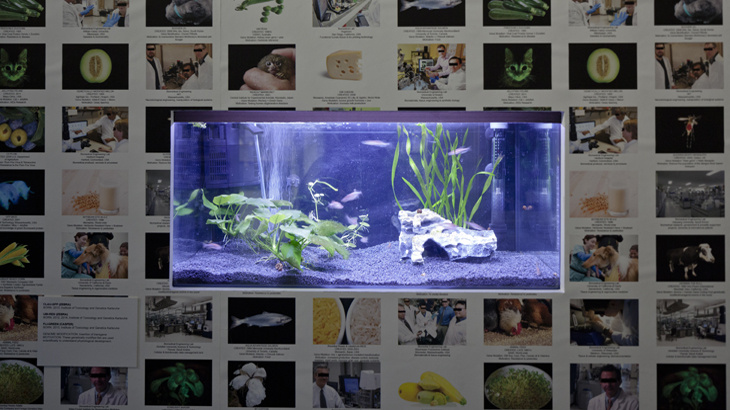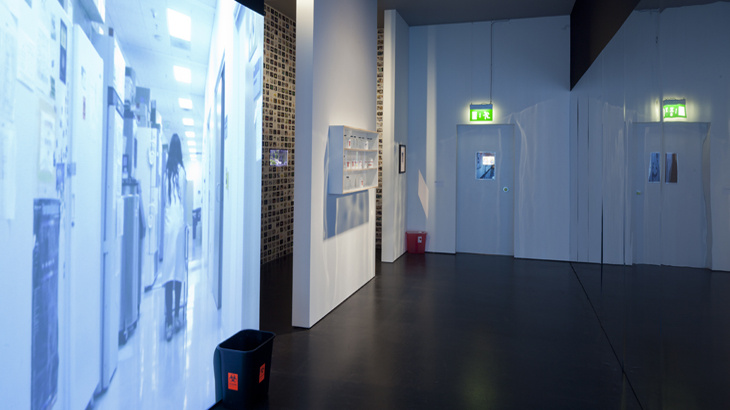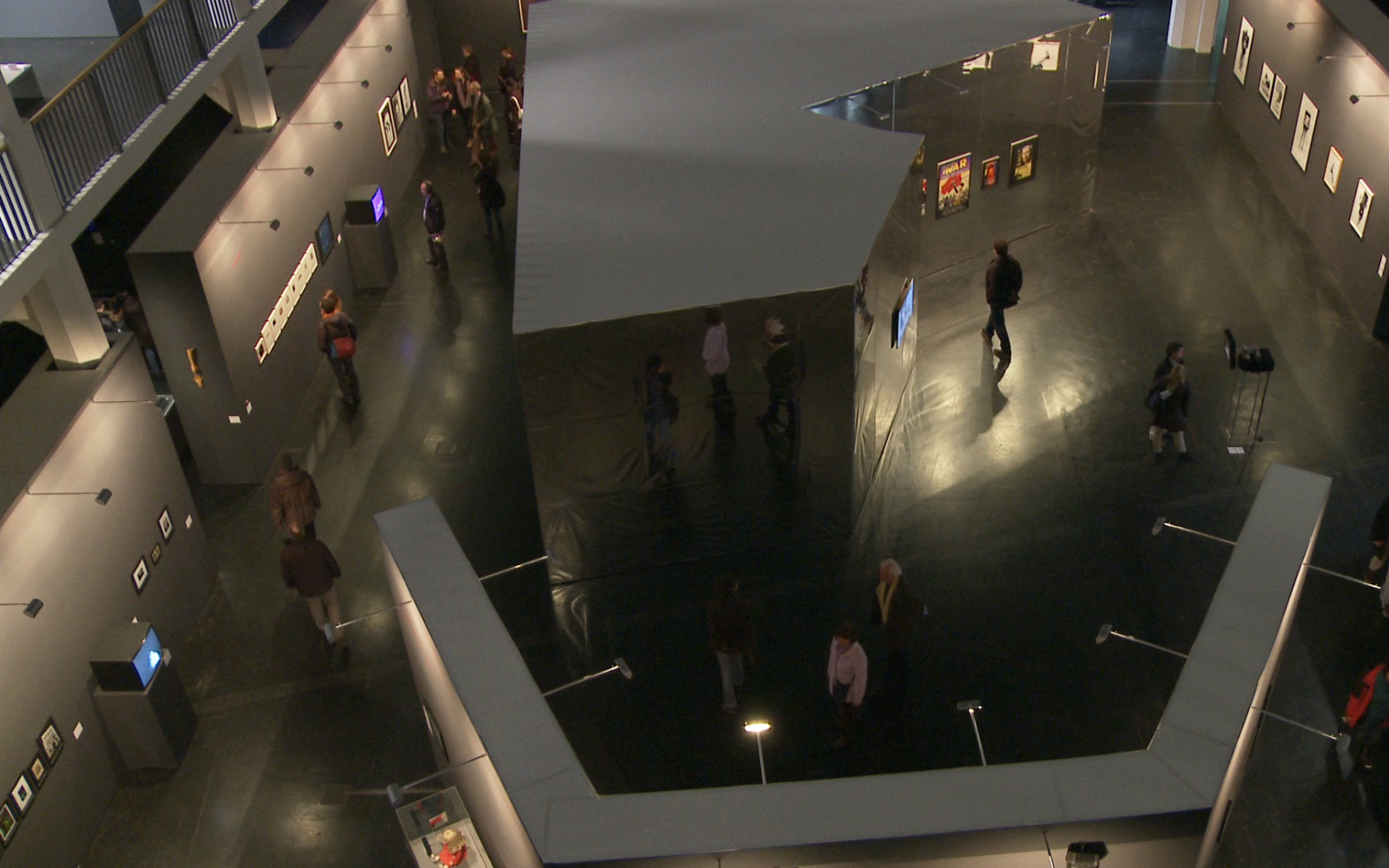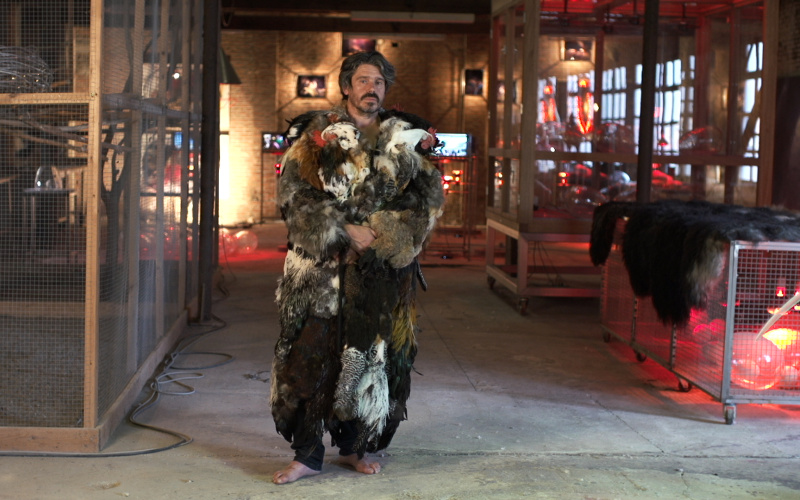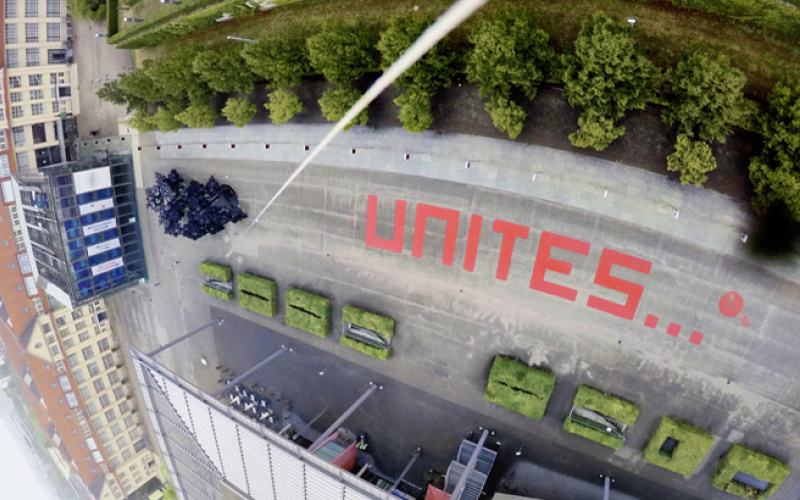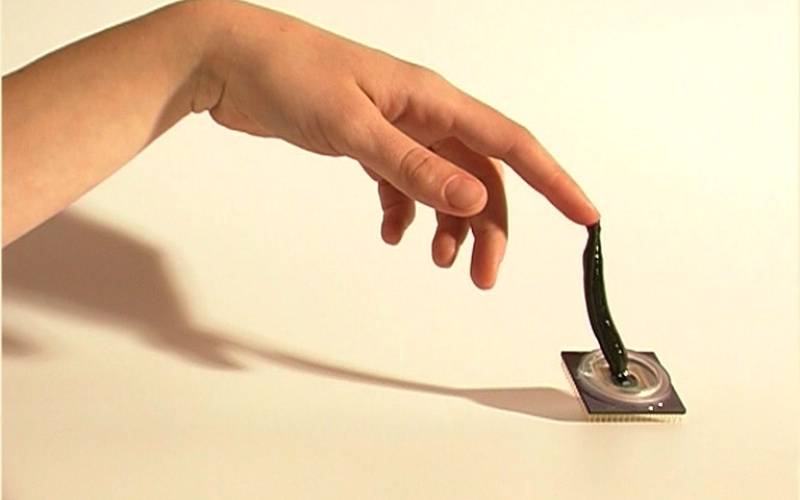A genetic engineering facility at the museum
In her installation »The Infinity Engine«, Lynn Hershman Leeson presents genetically modified fishes.
BY LINNEA SEMMERLING
For a number of months now, there has been a genetic engineering facility of German Safety Level 1 at the ZKM | Museum für Neue Kunst. This is a room in Lynn Hershman Leeson’s installation »The Infinity Engine«, which was created by the artist herself and produced by the ZKM. Until the end of the exhibition on 6th April, this is home to genetically modified zebrafish from the European Zebrafish Resource Center (EZRC) of the Karlsruhe Institute of Technology (KIT).
The scientists have introduced the fluorescent protein RFP (red fluorescent protein) into the muscle cells of the animals. It glows when certain light frequencies are shone on it and helps the biologists to observe growth processes.
Transgenetic fish
The set-up of a genetic engineering facility in the exhibition space is not an everyday event for the ZKM. Lots of applications had to be approved by the city and state authorities before the transgenic fish could be moved into the museum. In this case, it was not just the animal protection guidelines which had to be complied with. A high safety standard also had to be ensured. This means the fish are in a locked room, which can only be entered by the trained biologists who look after the well-being of the animals on a daily basis.
On the other hand, genetically modified fish can actually be kept as pets in the USA, the homeland of Lynn Hershman Leeson. The patented GloFish, whose skin expresses GFP (green fluorescent protein), have been produced and sold for many years by Texas-based company Yorktown Technologies meaning they are available in any well-stocked pet shop. This has made the colourfully shining fish the world’s first genetically modified animals that are commercially sold.
At the interface of art and science
For the work of artist Lynn Hershman Leeson, the dual function of the fluorescent fish as both a research object in the scientific laboratory and a pet in the domestic living room is particularly interesting.
In her work, she can impressively show, using these organisms, how genetic research is further penetrating our everyday life and increasingly influencing it. In this way, the artist takes a curious but critical look behind the laboratory door at this interface of art and science, engineering and reality.
Lynn Hershman Leeson. Civic Radar
Category
Related Tags
News Category
- take a look… behind the scenes of ZKM
